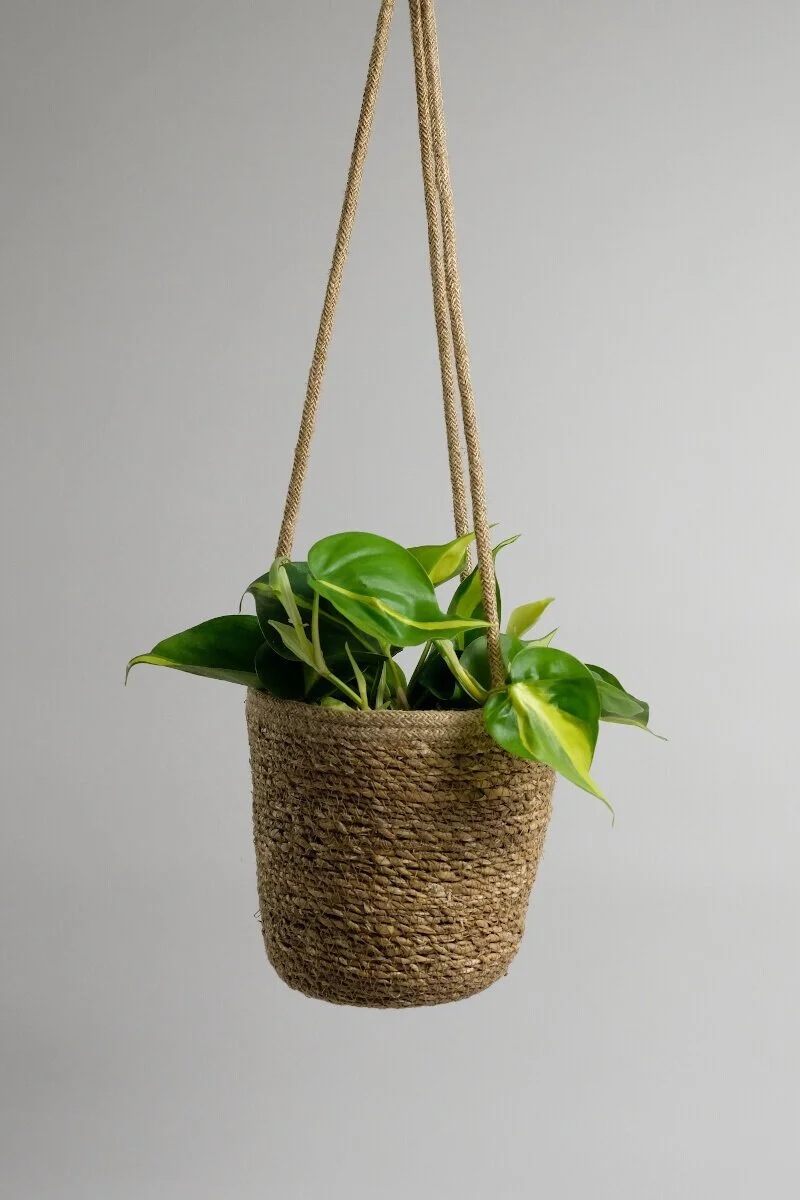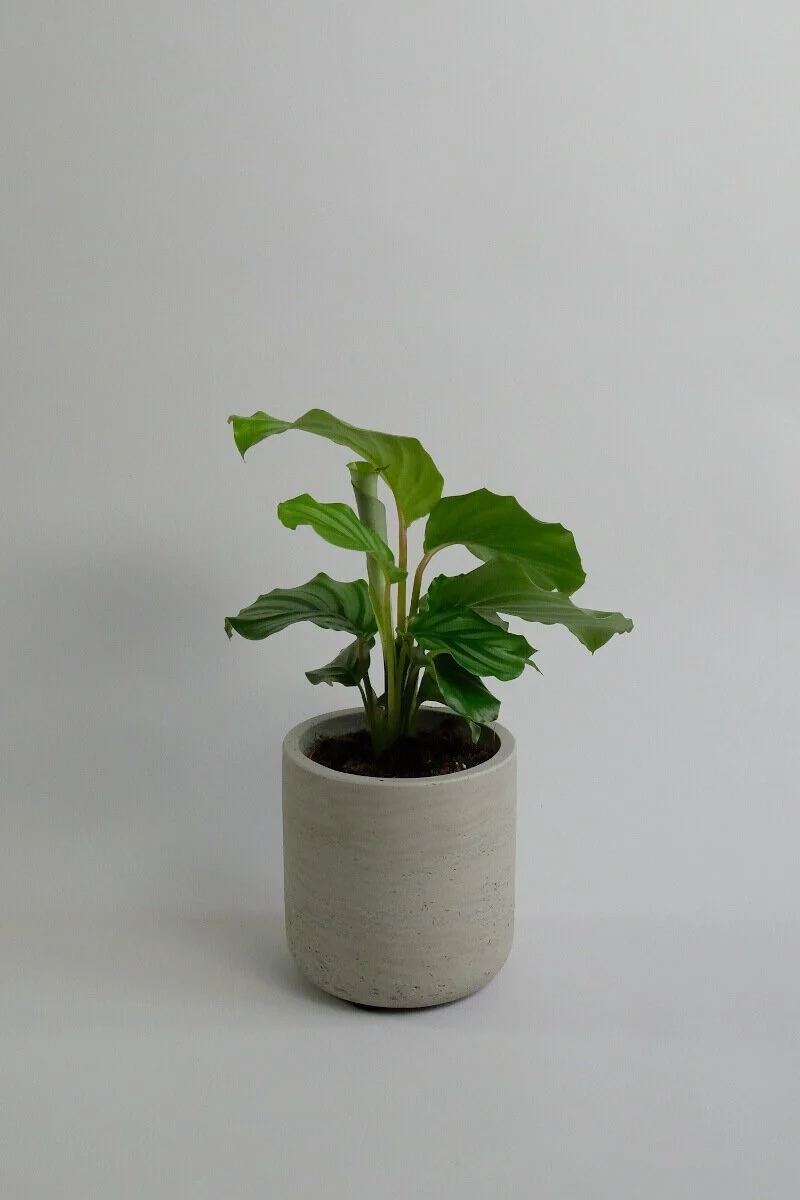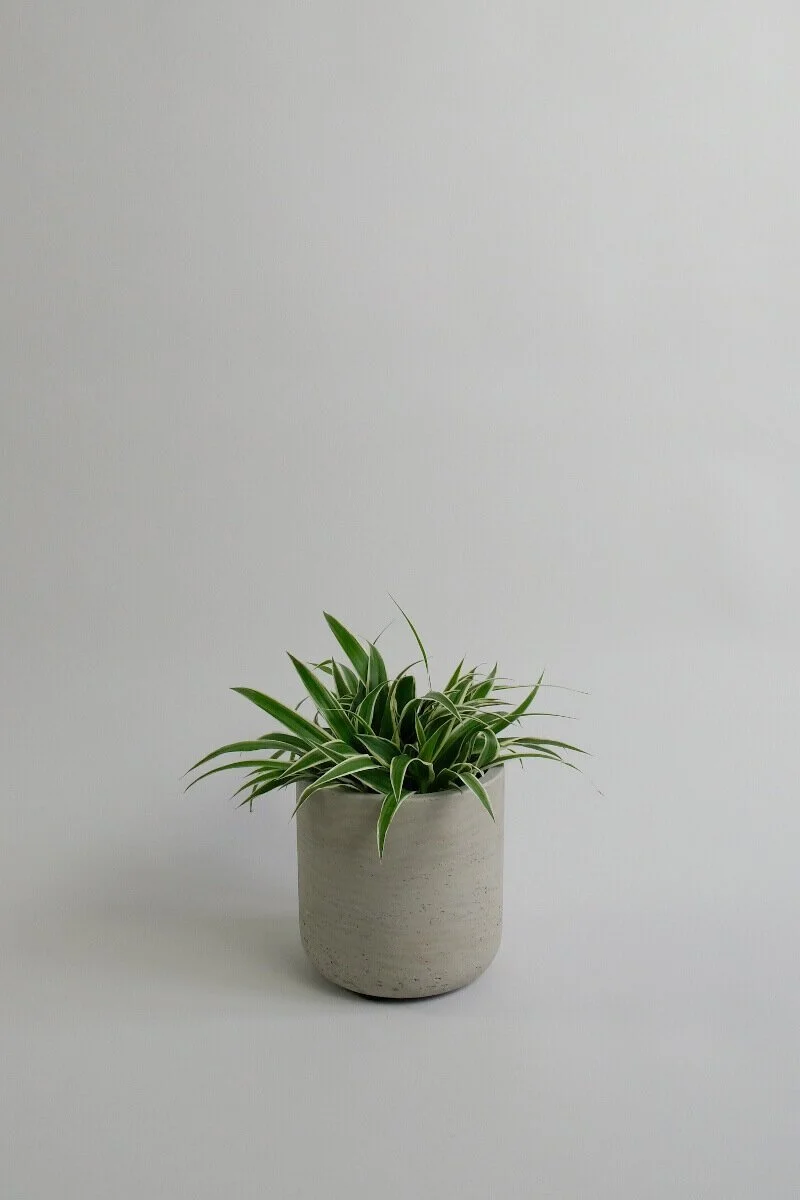
Plantclub Plant Care Guide
Satin Pothos
Watering:
Forget a watering or two and your pothos will forgive you, but it will be grateful if you give it a drink when the top soil dries out.
Light and placement:
Pothos can thrive in most conditions but direct sunlight will damage the leaves. They grow fastest in bright indirect sunlight.
Humidity level:
Normal household humidity will be fine for your pothos, but these plants appreciate regular misting.
Other:
Feed your pothos monthly in spring and summer. This plant is toxic to animals and humans so it’s best to grow higher up.
Philodendron Brazil
Watering:
Keep the soil moist, but ensure that your philodendron can drain well so that it’s not sitting in any excess water.
Light and placement:
The heart-leafed Philodendron enjoys bright, filtered or indirect light.
Humidity level:
This plant prefers humid conditions, so kitchens and bathrooms can be perfect homes. In the summer months, mist the leaves every couple of days to keep them looking lush and green.
Other:
You can give it a feed once a month with liquid fertilizer during the growing season (spring to fall).
Pothos
Watering:
Let the soil dry out between waterings — don’t stress if you forget to give your pothos a drink every now and then.
Light and placement:
Pothos is tolerant to low light but will grow faster in bright, indirect sun. Its foliage tends to grow towards the sunlight, so you can rotate its pot if this is happening.
Humidity level:
This plant prefers humid conditions, but can tolerate low humidity. Mist the leaves every now and then to keep the foliage looking green and lush.
Other:
You can give it a feed once a month with liquid fertilizer during the growing season (spring to fall).
Pothos is poisonous to animals and humans.
Lipstick Vine
Watering:
Water moderately but be sure that the soil has dried out fully between waterings.
Light and placement:
The lipstick vine likes bright but filtered light. That means it shouldn’t have the sun on it all day but keep it somewhere that does have good natural daylight.
Humidity level:
Originating in Southeast Asia, the vine is used to a humid climate so feel free to mist regularly.
Other:
Feel free to fertilize periodically during growing season
Monstera
Watering:
Monsteras only need water about once per week and even less during winter. Always check the soil before watering – if it’s still damp, you can wait.
Light and placement:
Monsteras like lots of light but be careful not to put it in direct sunlight otherwise it can burn!
Humidity level:
You can give your Monstera a mist with a spray can every couple of days to keep it happy. This is especially relevant if it’s near a radiator.
Other:
Fertilise them regularly between spring and fall.
Give their leaves a wipe regularly to keep the dust off so that they can stay healthy.
Pilea
Watering:
A weekly drink should be enough for your pilea. Make sure the top 5 cm of soil dries out between waterings.
Light and placement:
Keep out of direct sunlight to avoid scorching the leaves. These plants prefer bright, indirect light. Rotate the pot every week to avoid lopsided growth.
Humidity level:
Normal household humidity should be fine. If the edges of its leaves begin to brown, give it a mist to bring humidity levels up.
Other:
We wouldn’t recommend tasting the leaves, but pileas are safe if consumed by curious animals or children.
Sansevieria Zeylanica
Watering:
With succulent leaves that store water, snake plants don’t need much to drink. Let the soil dry out between waterings.
Light and placement:
Bright light is best for these plants. They can tolerate shade, and even a little direct sunlight.
Humidity level:
These plants don’t need any extra humidity, normal household levels are fine.
Other:
Root rot is the most common issue with these plants. Snake plants are mildly toxic to pets.
ZZ
Watering:
ZZ plants need a drink around every two weeks in summer, and once a month in winter. Let the soil dry out between waterings to avoid root mould.
Light and placement:
These plants are tough and can withstand most conditions. They’ll be happiest in moderate to bright light, but keep them out of direct sun or the leaves will brown.
Humidity level:
The humidity levels in your home should be fine for a ZZ. Mist the leaves if the leaves start to burn, or if the plant is placed near a heater.
Other:
Give them a monthly feed with liquid fertilizer from April to August, during the main growing season. If the leaves are collecting dust, wipe gently with a damp cloth to clean. ZZ plants are toxic — keep out of reach of kids and pets.
Calathea Orbifolia
Watering:
Little and often is the best policy — keep the soil moist but don’t let the plant stand in water or the roots will be damaged.
Light and placement:
These plants are tolerant of shade, but flourish in brighter spots. Keep out of direct sunlight or the leaves will fade and could burn.
Humidity level:
All prayer plants enjoy high humidity levels. If you have more than one houseplant of the Calathea family, grouping them together will increase their humidity levels.
Other:
Give it a feed with liquid fertilizer once a month in spring and summer.
These plants are safe for households with children and pets.
Succulent Trio
Watering:
Let the soil dry out between waterings. They’ll need to drink more when growing, in spring and summer. Think too little rather than too much water as the most common cause of succulent death is over-watering.
Light and placement:
Succulents love the sun. They lean towards light, so remember to rotate their pots regularly.
Humidity level:
These plants hate humidity — if the air is too damp it can cause problems with root rot and fungal problems.
Other:
Feed your succulents occasionally during spring and summer with liquid fertilizer.
Give the leaves and spines an occasional wipe with a damp cloth to remove dust and grime.
Maranta Leuconeura
Watering:
Give it a drink whenever the topsoil has dried out. Keep the soil moist, but don’t allow the roots to sit in water.
Light and placement:
These plants love bright light, but be sure to keep out of direct sunlight or its colors will fade and the leaves can burn.
Humidity level:
High humidity levels are essential for happy herringbone plants. Place in a kitchen or bathroom, or mist the leaves regularly.
Other:
Prayer plants are non-toxic.
Fertilize once or twice a month in spring and summer.
Aglaonema Maria
Watering:
Water thoroughly but be careful not to leave it in any standing water. Let the soil dry out between watering.
Light and placement:
The Aglaonema Maria doesn’t like bright, direct sunlight. Place your plant in a mid-light area.
Humidity level:
These plants don’t like drafts so keep them away from open windows.
Other:
You can feed your Aglaonema twice a year with fertilizer.
Sansevieria Laurentii
Watering:
With succulent leaves that store water, snake plants don’t need much to drink. Let the soil dry out between waterings.
Light and placement:
Bright light is best for these plants. They can tolerate shade, and even a little direct sunlight.
Humidity level:
These plants don’t need any extra humidity, normal household levels are fine.
Other:
Root rot is the most common issue with these plants. Snake plants are mildly toxic to pets.
Spider Plant
Watering:
With succulent leaves that store water, spider plants don’t need much to drink. Let the soil dry out between waterings.
Light and placement:
Bright light is best for these plants. They can tolerate shade, and even a little direct sunlight.
Humidity level:
These plants don’t need any extra humidity, normal household levels are fine.
Other:
Root rot is the most common issue with these plants. Spider plants are mildly toxic to pets.
Sign your company up with Plantclub for plants, wherever you work.
Leave your email and we’ll reach out to you with more information.
All data is processed in accordance with our privacy policy.














